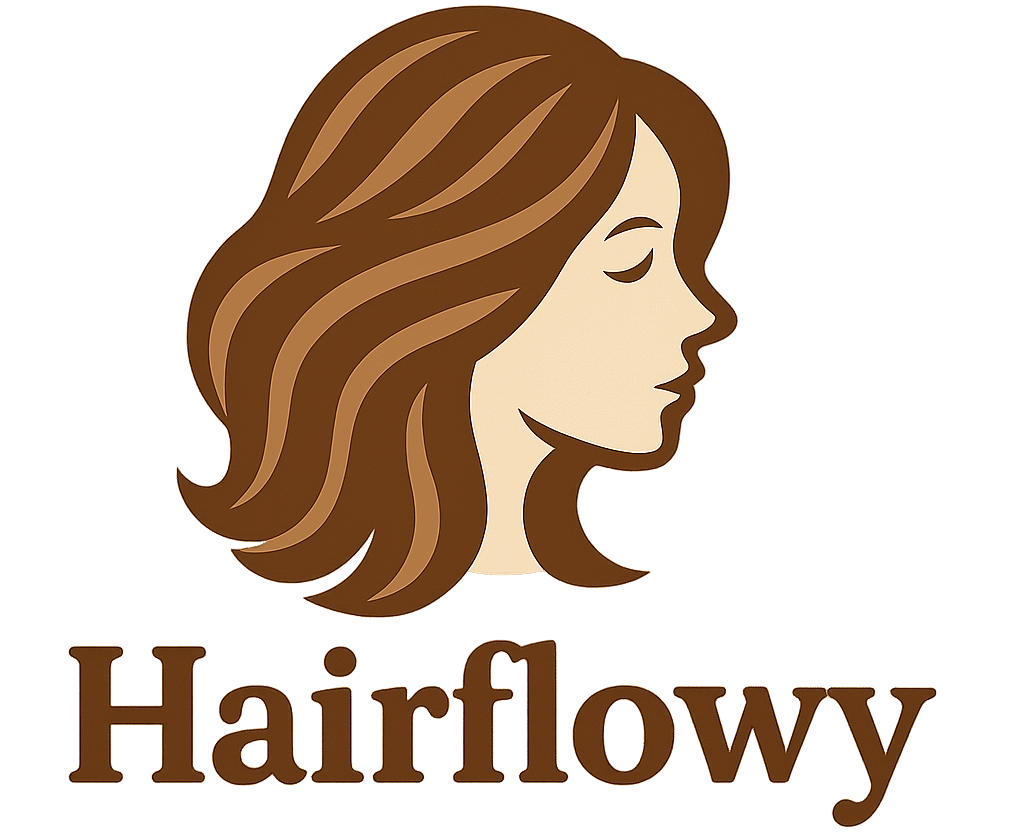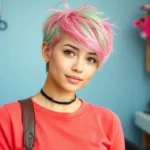Landing your dream job starts long before you walk into that interview room – it begins with the first impression you make. While your qualifications and experience matter most, we can’t ignore the psychology behind visual presentation. Your hairstyle plays a crucial role in projecting confidence and professionalism from the moment you step through the door.
We’ve all heard the saying “dress for the job you want” but the same principle applies to your hair. The right interview hairstyle can boost your confidence while ensuring you’re remembered for all the right reasons. Whether you’re entering a conservative corporate environment or a creative startup, your hair choice should align with both your personal style and the company culture.
The stakes are higher than you might think. Research shows that hiring managers form opinions within the first few seconds of meeting candidates. That’s why we’ve compiled the most effective interview hairstyles that’ll help you make a powerful first impression while staying true to yourself.
Classic Low Bun: The Timeless Professional Choice
We recommend the classic low bun as one of the most versatile and sophisticated interview hairstyles for women. This elegant style conveys professionalism while maintaining a polished appearance that works across virtually all industries.
How to Create a Sleek Low Bun
Start by preparing your hair with a smoothing serum to eliminate frizz and flyaways. Brush your hair straight back using a fine-tooth comb, ensuring there are no bumps or uneven sections.
Gather your hair at the nape of your neck, securing it with a clear elastic band that won’t show through your finished style. Position the ponytail low enough that it sits just above your hairline.
Twist the ponytail gently and wrap it around the base of the elastic, creating a neat coil. Secure the bun with bobby pins that match your hair color, inserting them at different angles for maximum hold.
Smooth any remaining flyaways with a light mist of hairspray and a small brush. Check your bun from all angles to ensure it looks symmetrical and professional.
Best Hair Products for a Polished Finish
Smoothing serums like TRESemmé Keratin Smooth Heat Protection Spray create the foundation for a sleek look while protecting hair from heat damage. Apply these products to damp hair before blow drying.
Strong-hold hairsprays such as L’Oréal Elnett Satin Extra Strong Hold provide lasting control without creating stiffness or visible residue. We suggest using these products as a finishing touch rather than throughout the styling process.
Anti-frizz creams including Moroccanoil Smoothing Lotion help maintain your bun’s polished appearance throughout long interview days. These products work especially well for naturally textured or humidity-prone hair.
Clear elastic bands and bobby pins in matching hair colors complete your styling toolkit. Quality hair accessories prevent breakage and ensure your bun stays secure during important meetings.
Face Shapes That Work Best With Low Buns
Oval faces complement low buns perfectly because this hairstyle doesn’t compete with naturally balanced facial proportions. Women with oval face shapes can wear this style with confidence in any professional setting.
Square faces benefit from the softening effect of low buns, particularly when you leave a few face-framing pieces loose. This technique helps balance strong jawlines while maintaining interview-appropriate styling.
Round faces look excellent with low buns positioned slightly higher at the nape, which creates the illusion of length. Adding subtle volume at the crown enhances this elongating effect.
Heart-shaped faces work beautifully with textured low buns that add visual weight to the lower portion of the face. Consider incorporating gentle waves before creating your bun to achieve this balancing effect.
Straight Blowout: Clean and Sophisticated Look

We consider the straight blowout one of the most reliable interview hairstyles that delivers both elegance and professionalism. This timeless style works exceptionally well for women seeking a polished appearance that complements any industry setting.
Achieving the Perfect Straight Style
Creating the perfect straight blowout starts with selecting the right brush for your hair length and texture. We recommend using a ceramic or boar bristle round brush, as this type of brush helps achieve straighter results, especially for longer hair. Larger brushes work more effectively for longer hair lengths, while smaller brushes perform better on tighter curls.
Sectioning becomes crucial when working toward professional results. We suggest dividing your hair into manageable sections and drying each one with the round brush while directing the hair in the opposite direction for more lift at the roots. Medium to high heat settings on your blow dryer will depend on your exact hair type and thickness.
Finishing touches make all the difference in achieving that salon quality look. We always use the cool shot feature once the style is nearly dry to set the blowout and lock in the smoothness.
Tools and Techniques for Long-Lasting Results
Protecting your hair from heat damage ensures both healthy strands and lasting style. We always apply a heat protectant spray before beginning any thermal styling process to prevent damage from high temperatures.
Quality tools contribute significantly to the longevity of your blowout. We invest in ceramic or boar bristle round brushes because they distribute heat evenly and reduce frizz more effectively than standard plastic brushes.
Avoiding contact with your styled hair helps maintain the fresh blowout appearance. We recommend keeping hands away from your hair after styling, as oils from your fingers can cause the hair to become greasy and lose its smooth finish.
Maintaining Your Blowout Throughout the Day
Securing your style without stiffness requires the right finishing products. We use light hold hairspray to keep the blowout in place while maintaining natural movement and avoiding that helmet like appearance.
Environmental factors can quickly undo your styling efforts. We suggest avoiding humid environments whenever possible, as humidity causes frizz and can compromise the sleek finish of your straight blowout.
Touch up strategies help extend your style’s lifespan throughout long interview days. We carry a small paddle brush for quick smoothing and a travel size hairspray for emergency touch ups between meetings.
Low Ponytail: Simple Yet Elegant Option

Low ponytails offer a timeless solution that balances professionalism with understated elegance. We find this versatile style works exceptionally well for interviews because it keeps hair off the face while creating a clean, polished appearance that highlights your facial expressions.
Creating Volume Without Looking Casual
Adding volume to your ponytail requires strategic techniques that maintain a professional appearance. We recommend applying a hair serum before styling to create body without appearing casual or overly voluminous. Light-hold hairspray works wonders for maintaining the style while adding subtle sophistication to your overall look.
Subtle waves or curls enhance the ponytail’s dimension without compromising its professional appeal. These gentle textures add visual interest while keeping the style appropriate for conservative interview environments. Gentle teasing at the crown can create lift without making the hairstyle appear too casual for formal settings.
Accessorizing Your Ponytail Professionally
Professional ponytail accessories should complement rather than compete with your overall interview look. We suggest choosing simple, elegant hairpins or clips that match your outfit’s color palette and maintain the style’s sophistication. Avoid flashy or casual accessories that might distract from your qualifications and professional demeanor.
Quality hair ties in neutral colors like black, brown, or clear work best for maintaining a polished appearance. Metal barrettes or small decorative pins can add subtle elegance without overwhelming the hairstyle. Conservative choices ensure your accessories enhance rather than detract from your professional presentation.
Variations for Different Hair Lengths
Long Hair: Low ponytails and chignons work beautifully for longer lengths, keeping hair secure and away from your face during important conversations. Twisting the ponytail into a low chignon adds extra elegance and shows attention to detail that interviewers often appreciate.
Medium-Length Hair: Half-up, half-down styles provide excellent alternatives for medium lengths while maintaining professional standards. These variations frame the face attractively while keeping the overall look polished and interview-appropriate.
Short to Medium Hair: Lower positioning works better for shorter lengths, creating a more balanced proportion that complements your facial features. These adaptations ensure the style remains flattering regardless of your hair’s natural length or texture.
Side-Swept Bob: Modern and Approachable Style

We recommend the side-swept bob as an excellent choice that bridges professionalism with contemporary style. This versatile cut features face-contouring bangs that add volume and create an approachable yet sophisticated appearance perfect for interviews.
Styling Tips for a Fresh Bob Look
Maintain regular trims every 4-6 weeks to keep your bob looking sharp and polished throughout the interview process. Clean lines make all the difference in achieving that professional edge we’re aiming for.
Select quality styling products like smoothing serums or texturizing sprays to enhance your natural hair texture without weighing it down. Light-hold products work best for maintaining movement while keeping everything in place.
Blow-dry with a round brush to create subtle lift at the roots and smooth the ends under for that classic bob shape. This technique ensures your style looks intentional and well-groomed.
Position your side-swept bangs to complement your face shape rather than following generic trends. The right angle can enhance your features and create that mysterious yet approachable look celebrities like Emily Ratajkowski and Karlie Kloss have made popular.
Adding Subtle Waves for Texture
Create depth with a curling iron using 1-inch barrel sections throughout your bob for added dimension and movement. We suggest alternating curl directions to achieve that effortlessly textured appearance.
Use a flat iron technique by wrapping small sections around the plates and pulling through slowly for softer, more natural-looking waves. This method gives you better control over the final result.
Apply texturizing spray before heat styling to enhance your hair’s natural texture and help waves hold their shape longer. Beach wave products work particularly well with bob lengths.
Scrunch lightly with your fingers after styling to break up any uniform patterns and create that lived-in texture that looks both professional and current.
Choosing the Right Side Part
Determine your natural part by pushing your hair straight back when wet and seeing where it naturally falls. Working with your hair’s natural growth pattern creates the most flattering and manageable style.
Consider your face shape when positioning your part – deeper side parts work beautifully for round faces as they help elongate facial features. Those with square faces benefit from softer, less dramatic side parts.
Experiment with part placement during your practice styling sessions rather than on interview day. We recommend trying parts at different depths to see which creates the most balanced and flattering frame for your features.
Set your chosen part with a light-hold hairspray or styling cream to prevent it from shifting throughout your interview day. A well-defined part keeps your entire look polished and intentional.
Half-Up Half-Down: Balancing Professional and Feminine

Building on sophisticated interview looks, we recommend the half-up half-down hairstyle as an ideal choice that perfectly combines professional polish with feminine charm. This versatile style pulls back the top section of your hair while allowing the rest to flow naturally, keeping strands away from your face while maintaining an approachable appearance.
Securing the Style Without Flyaways
Creating a flawless half-up section requires strategic product application and proper technique to maintain your professional image throughout the interview. We suggest using a fine-tooth comb to smooth the top portion before securing it with bobby pins or a small elastic band. Quality hair wax helps tame stubborn flyaways around the hairline while providing lasting hold without stiffness.
Brushing with a boar bristle brush ensures every strand lies flat and creates the polished foundation this style demands. Strong-hold hairspray applied lightly to the secured section locks everything in place without creating crunchiness or visible buildup. Double-checking your work in natural light reveals any missed flyaways that could detract from your professional presentation.
Adding Gentle Curls to the Lower Section
Improving the flowing portion with soft waves elevates this hairstyle from casual to interview-appropriate while maintaining its approachable nature. We recommend using a curling wand on medium heat to create loose curls that complement various face shapes and hair textures. Starting the curls below ear level prevents the style from appearing too elaborate for professional settings.
Light curling motions away from your face open up your features and create the most flattering frame for your interview presentation. Finger-combing the curls after they cool breaks up the ringlet pattern for softer, more natural-looking waves. This technique works particularly well when you want to add movement and dimension without overwhelming the professional aesthetic.
When This Style Works Best
This hairstyle excels in industries that value both professionalism and creativity, making it perfect for marketing, public relations, and business casual environments. We find it particularly effective for women who want to showcase their personality while maintaining interview-appropriate boundaries. The style adapts beautifully to various hair lengths and textures, from fine straight hair to thick wavy strands.
Quick execution makes this option ideal for busy interview schedules, as the entire process takes less than 15 minutes with practice. Modern workplaces that emphasize approachability and collaboration respond well to this balanced aesthetic. The versatility allows you to adjust the tightness of the top section and the curl intensity based on your exact industry’s expectations.
Sleek Pixie Cut: Confident and Contemporary

Pixie cuts exude modern confidence while maintaining the polished professionalism essential for interview success. We recommend this contemporary hairstyle for women who want to make a bold yet appropriate statement during their job search.
Styling Short Hair for Maximum Impact
Creating definition becomes crucial when styling pixie cuts for interviews since the shorter length requires precise attention to shape and texture. We suggest using lightweight styling products to enhance your cut’s natural definition without creating heaviness that weighs down fine hair. Texturing techniques work exceptionally well for adding visual interest while maintaining a professional appearance that hiring managers appreciate.
Strategic product placement makes all the difference in achieving a polished pixie look that projects confidence throughout your interview day. We recommend applying styling products to damp hair for even distribution and better hold. Controlled styling prevents over manipulation of short layers while ensuring your hairstyle maintains its shape during long interview sessions.
Product Recommendations for Pixie Cuts
Lightweight styling products serve as the foundation for creating well defined pixie cuts that look professionally maintained rather than casual or unkempt. We specifically recommend hair wax or pomades for adding controlled hold to shorter layers without creating stiffness or unnatural shine.
| Product Type | Primary Benefit | Application Method |
|---|---|---|
| Lightweight styling cream | Adds texture and definition | Apply to damp hair |
| Hair wax | Provides hold for shorter layers | Work through dry hair |
| Pomade | Creates controlled shine and structure | Use sparingly on styled hair |
Quality matters significantly when selecting products for pixie cuts since the shorter length makes every styling choice more visible and impactful during your interview presentation.
Maintaining Shape Between Salon Visits
Regular trim schedules ensure your pixie cut maintains its professional appearance between important interviews and meetings. We recommend booking appointments every 4 to 6 weeks to preserve the shape and prevent overgrown areas that can appear unprofessional.
Smart styling habits extend the life of your cut while keeping maintenance requirements manageable during busy job search periods. We suggest avoiding over styling techniques that can damage short hair and compromise the clean lines essential for interview appropriate pixie cuts. Proper product selection supports daily maintenance by providing the right amount of hold and definition without requiring excessive manipulation or heat styling that can weaken shorter strands.
French Twist: Sophisticated Updo for Special Occasions

The French twist remains one of the most elegant updo options for professional interviews and formal settings. This classic hairstyle conveys sophistication and attention to detail, making it perfect for women who want to project confidence and refinement during important meetings.
Step-by-Step French Twist Tutorial
We’ll walk you through creating this timeless look with our proven method that works for most hair types.
Start by combing all your hair backwards as if you’re preparing for a low ponytail at the nape of your neck. This foundation step ensures smooth lines and eliminates any bumps or irregularities.
Hold the gathered hair with your non-dominant hand while using your dominant hand to twist the hair vertically upwards. Wrap the hair around your fingers to create structure and maintain control throughout the twisting process.
Bring the ends up and tuck them under the twisted section for a neat, polished finish. This technique hides any uneven lengths and creates the signature clean appearance of a professional French twist.
Insert a large hair fork or French pin on the side of the twist, sliding it through the twisted section before angling it downward to lock everything in place. Quality pins provide superior hold compared to regular bobby pins.
Smooth the top and sides carefully to eliminate any flyaways or bumps, then apply styling cream or light hairspray to maintain the polished appearance throughout your interview.
Variations for Different Hair Textures
We’ve adapted this classic style to work beautifully across various hair textures and lengths.
Straight hair creates the easiest French twist since it naturally holds the twisted shape well and requires minimal additional product. The smooth texture allows for clean lines and effortless styling.
Curly and coily hair requires extra pins and strong-hold spray to maintain the twist throughout the day. Apply smoothing serum before styling to manage frizz and create a sleeker finish that photographs well.
Short hair can achieve this look by adding clip-in extensions or using multiple bobby pins to secure shorter sections into the main twist. Position the pins strategically to blend seamlessly with your natural hair.
Securing the Style for All-Day Wear
We recommend these professional techniques to ensure your French twist stays perfect from morning interviews through evening events.
Invest in high-quality hair accessories including large hair forks or French pins that provide better support than standard bobby pins. These professional-grade tools distribute weight evenly and prevent slipping.
Apply styling products strategically using light hairspray or smoothing cream to control stray hairs without creating stiffness. Focus on the hairline and any areas prone to frizz or movement.
Test the comfort level by ensuring pins don’t poke into your scalp and the twist isn’t pulled too tightly for extended wear. A comfortable style helps you focus on your interview performance rather than hair discomfort.
Soft Waves: Polished Yet Approachable Look

Soft waves strike the perfect balance between professionalism and warmth, creating an interview hairstyle that’s both polished and approachable. This versatile style enhances your natural hair texture while maintaining the sophisticated appearance that hiring managers expect.
Creating Natural-Looking Waves
Use a curling iron or wand with a larger barrel size to achieve the loose, professional waves that work best for interviews. We recommend choosing a 1.5 to 2-inch barrel, which creates softer curls that appear more natural and less structured.
Alternate the direction of each curl as you work through your hair to prevent uniformity that can look too formal or artificial. Starting some curls away from your face and others toward your face creates organic movement that enhances your features.
Apply a light-hold hairspray after completing each section to set the waves without creating stiffness or crunch. This technique ensures your hairstyle maintains its shape throughout lengthy interview processes while looking effortlessly polished.
Avoiding Overly Casual Beach Wave Styles
Smooth out excessive texture or volume at the roots to maintain a professional appearance rather than a casual beach look. We focus on creating controlled waves that start mid-shaft rather than at the scalp, which keeps the style looking intentional and refined.
Brush through the waves gently with a wide-tooth comb or paddle brush to eliminate any frizz or flyaways that might detract from your polished appearance. This step transforms tousled beach waves into sophisticated interview-appropriate styling.
Control the wave pattern by ensuring each section follows a similar size and technique, creating consistency that reads as professional rather than spontaneous. The goal is achieving waves that look naturally beautiful rather than windswept or messy.
Best Wave Techniques for Professional Settings
Blend soft waves with a sleek base by smoothing the top section of your hair while adding gentle waves to the mid-lengths and ends. This combination creates visual interest while maintaining the clean lines that work well in corporate environments.
Combine waves with a low ponytail or chignon to create an elevated look that’s perfect for more formal interview settings. Adding subtle waves to the visible portions of an updo softens the overall appearance while keeping hair controlled and professional.
Incorporate subtle hair accessories such as small clips or bobby pins that complement your outfit without drawing attention away from your qualifications. Choose accessories in neutral tones that enhance rather than compete with your overall interview presentation.
Conclusion
We’ve covered a diverse range of interview hairstyles that’ll help you make the best possible impression during your job search. From timeless classics like the low bun and French twist to contemporary choices like the sleek pixie cut each style offers its own advantages for different face shapes hair textures and industry expectations.
Remember that confidence is your best accessory regardless of which hairstyle you choose. Take time to practice your selected look beforehand and invest in quality styling products that’ll keep your hair looking polished throughout the interview process.
The key to interview success lies in finding a hairstyle that feels authentically you while maintaining the professional polish that hiring managers expect. With these styling techniques and tips in your arsenal you’re well-equipped to present your most confident self at your next interview.
Frequently Asked Questions
What are the best hairstyles for job interviews?
The most professional interview hairstyles include the classic low bun, straight blowout, low ponytail, side-swept bob, half-up half-down style, sleek pixie cut, French twist, and soft waves. These styles project confidence and professionalism while complementing various face shapes and company cultures.
How do I create a perfect low bun for an interview?
Start with smooth hair using a serum, gather it at the nape of your neck, twist into a bun, and secure with bobby pins. Finish with strong-hold hairspray and anti-frizz cream for a polished look. This classic style works well for all face shapes and industries.
What products should I use for a professional straight blowout?
Use a heat protectant spray before styling, select the right brush for your hair length and texture, and finish with light-hold hairspray. Section your hair for optimal results and invest in quality tools for a long-lasting, elegant blowout that maintains its shape throughout the day.
How can I make a low ponytail look professional for interviews?
Position the ponytail at the nape of your neck, use hair serum for smoothness, and secure with a simple elastic. Add subtle waves or light volume for dimension, and finish with light-hold hairspray. Choose professional accessories that complement your outfit without being flashy.
What’s the best way to style a side-swept bob for interviews?
Maintain regular trims for freshness, use quality styling products, and blow-dry with proper technique. Create a side part that flatters your face shape, add subtle waves for texture if desired, and practice different part placements to find your most flattering look.
Is a pixie cut appropriate for job interviews?
Yes, a sleek pixie cut can make a confident, contemporary statement. Use lightweight styling products to enhance natural texture, maintain regular trims for shape, and apply hair wax or pomade for definition. This style projects confidence while remaining professional and appropriate.
How do I create soft waves that look professional for interviews?
Use a large barrel curling iron, alternate curl directions for natural movement, and start waves mid-shaft rather than at the roots. Apply light-hold hairspray to maintain shape and avoid overly casual beach wave styles. Focus on controlled, refined waves for a polished appearance.
What should I avoid when choosing an interview hairstyle?
Avoid overly casual styles like messy beach waves, flashy accessories, or hairstyles that require constant touching or adjusting. Stay away from extreme colors or cuts, and ensure your chosen style aligns with the company culture while maintaining a professional, polished appearance throughout the interview.







